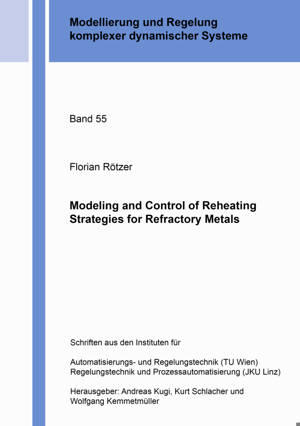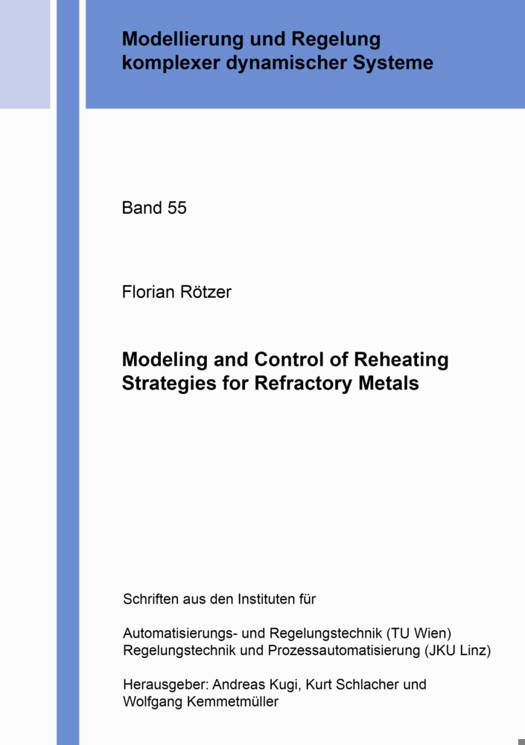
- Afhalen na 1 uur in een winkel met voorraad
- Gratis thuislevering in België vanaf € 30
- Ruim aanbod met 7 miljoen producten
- Afhalen na 1 uur in een winkel met voorraad
- Gratis thuislevering in België vanaf € 30
- Ruim aanbod met 7 miljoen producten
Zoeken
Modeling and Control of Reheating Strategies for Refractory Metals
Dissertationsschrift
Florian Rötzer
€ 45,45
+ 90 punten
Omschrijving
This thesis deals with the application of control engineering methods to two reheating processes in a flat stock production line. The objective in both cases is to save time and energy in the reheating processes, while the quality of the products should not be compromised.In the first part of the thesis, batch-type chamber furnaces used in a hot rolling plant are considered. Energy saving is achieved by minimizing the residence times for each product that is charged into the furnace. A detailed process model of the chamber furnace is derived from first principles and subsequently reduced to a first-order nonlinear system, which is able to capture the time evolution of the discharge temperature of the product with sufficient accuracy. The first-order model is exploited in a learning strategy to improve the estimates of the minimum residence times from one product to the next. The designed estimator is computationally inexpensive and can be applied to a wide range of similar furnace systems.The second part of the thesis deals with an induction heating system used in the strip coil production. Thin sheets of refractory metals are reheated along a cutting line. Flatness defects of the sheet cause fluctuations in the air gap between the inductor and the sheet, which entail strong temperature inhomogeneities. The induction heating problem is formulated as a multiphysics process model, which is subsequently simplified for the controller design. Based on the resulting control-oriented model, a cascade controller for the transmitted heating power and a two-degrees-of-freedom temperature controller are designed to compensate for changes in the mean air gap. The concept allows for further improvements in several directions, depending on the available system inputs and outputs.
Specificaties
Betrokkenen
- Auteur(s):
- Uitgeverij:
Inhoud
- Aantal bladzijden:
- 146
- Taal:
- Engels
- Reeks:
- Reeksnummer:
- nr. 55
Eigenschappen
- Productcode (EAN):
- 9783844082470
- Uitvoering:
- Paperback
- Afmetingen:
- 174 mm x 9 mm
- Gewicht:
- 274 g

Alleen bij Standaard Boekhandel
+ 90 punten op je klantenkaart van Standaard Boekhandel
Beoordelingen
We publiceren alleen reviews die voldoen aan de voorwaarden voor reviews. Bekijk onze voorwaarden voor reviews.











